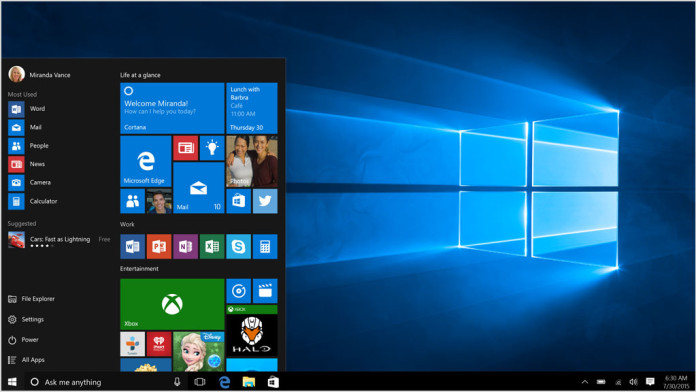
news Telstra is rolling out Microsoft Windows 10 on Surface devices at its retail outlets in a move aimed to blur the line between in-store and online sales.
Telstra said it is aiming to “redefine the role of the physical store”, via the use of Windows 10 in conjunction the Universal Windows App Platform.
This pairing, the telco said, allowed it to develop and deploy “engaging and adaptable” content and applications across a range of devices and displays throughout stores.
“This helps put the customer at the centre of the store experience, enabling them to browse, test, learn and compare products and services as they make their purchasing decisions,” Tesltra said.
Using Windows 10 on Microsoft Surface and other Windows 10 devices – and developed with Telstra’s partner Engagis – the solution has enabled Telstra to offer new ways to engage customers.
For example, NFC-enabled ‘tap and take’ cards are now being used to let customers build customised “digital brochures” by tapping the card on their selected product or service on digital kiosks.
Each card has a unique code enabling the customer to access their personalised information online, where they can review their selected products and complete the transaction if desired.
The new solution also allows Telstra to leverage Microsoft’s Power BI business analytics tool to analyse customer traffic and offer a better selection of products.
“Last year, we saw more than half our service transactions were digital, which has given us the opportunity to think big and redefine the role of our physical stores,” said Andrew Smith, Telstra’s Director of Retail Operations.
The Windows 10 solution is already in place in six of Telstra’s outlets, including the Sydney and Melbourne Discovery stores, with 40% of customers who interacted digitally in-store continuing their engagement online, the firm said.
Telstra also plans to replace desktop PCs with more than 5,000 Surface devices over the “next few years”, allowing products to be searched and paid for from anywhere in the store without the need to visit a dedicated point-of-sale desk.
“With these customer experience and system improvements, our aim is to reduce the average wait times for customers to around three minutes. This will enable us to drive more sales, serve more customers and importantly, improve their in store experience with us,” said Smith.
“Windows 10 is a great platform for helping our people use small and large devices to be faster, more efficient and provide that seamless customer experience we’re aiming for,” he added.
Evan Williams, Microsoft Australia’s Business Group Lead Windows & Devices, said the development was an example of how Windows 10 is enabling retailers to embrace digital transformation in today’s multichannel retail environment.
“The cloud and digital experiences are profoundly changing the way both businesses and customers interact,” Williams said. “Forward-thinking companies like Telstra are embracing that change by understanding and adopting the possibilities provided by technology to improve the end-to-end customer experience – from consideration to buy and use.
Image credit: Microsoft

Brave move by Telstra, Microsoft Windows 10 Mobile is damaging their market with an operating system which is immature and developers that are not confident to adopt.
As long as the costing is right, nobody will care. I remember the first useable Windows–Win3.0. Of course it could barely run DOS apps let alone Windows apps, but it ran on half the memory used by OS/2, and cost less than a third… Then Microsoft released Win3.1 which had slightly improved OLE and stuff, but the same pricing simply wiped IBM off the map. In spite of the undeniable fact that Win3.1 ran better in an OS/2 environment than in a DOS environment.
But Telstra seems to have at least addressed the problem many of us face in dealing with B&M retailers which have an online store: many of the online offerings are not available in the B&M. Which then leads us to seek better online prices elsewhere…
That should say “…Win3.1 apps ran…a DOS/Win environment.”
Windows and Microsoft are still a thing? Hmm. You learn something everyday. I thought they’d long joined IBM in the cesspool of legacy support and consulting.
Microsoft’s Stephen Elop, trojan horse , starting work. Lets see how long it takes for there shares to drop and Microsoft buys them out.
Seriously, could that be bad?
Comments are closed.